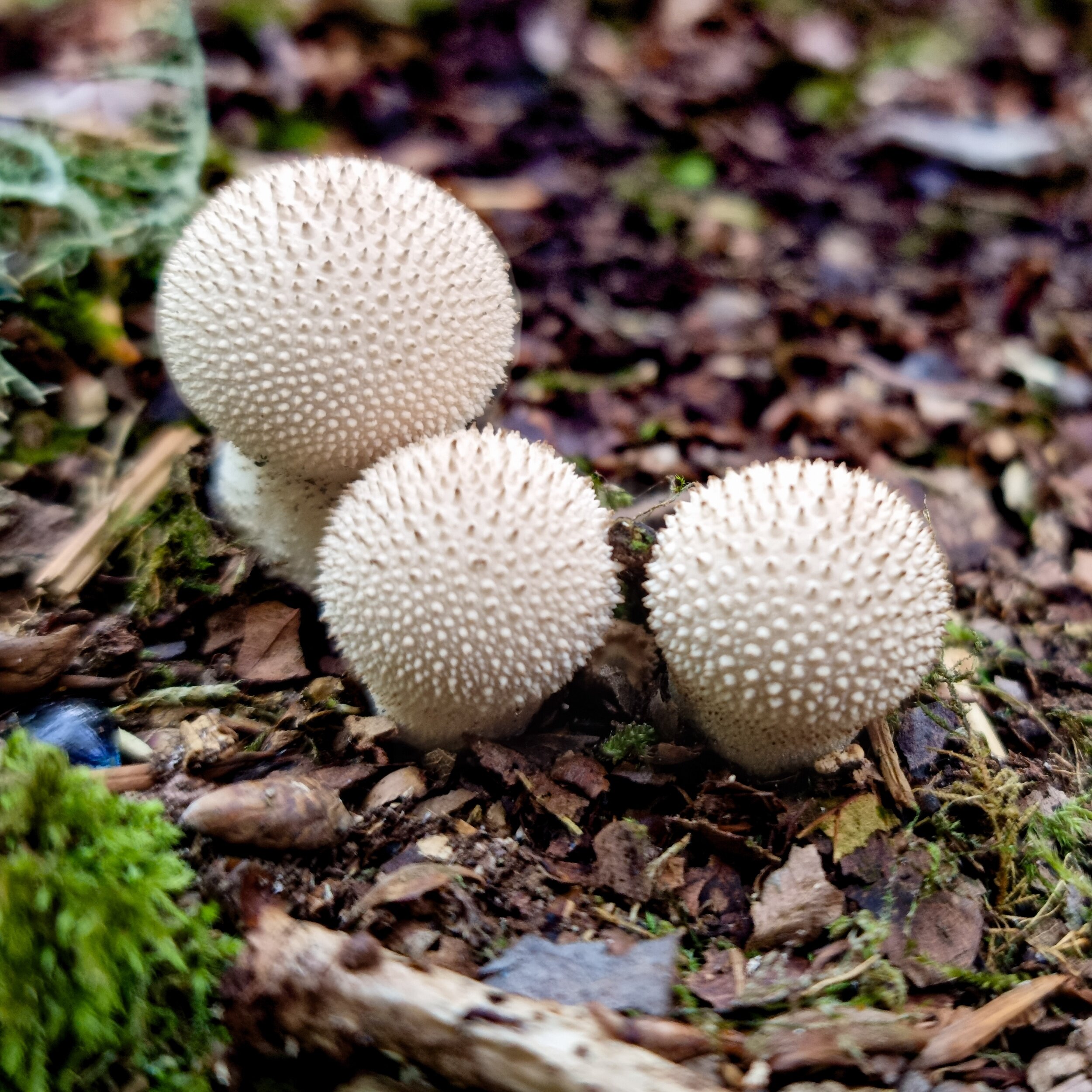Common puffball
How To ID Me And What I’m Good For?
My ID Features:
In situ
In situ
In situ
Cross Section
Common Puffball alongside Lycoperdon nigrescens (Dusky Puffball). Both edible.
Common Puffball
Latin Name - Lycoperdon perlatum.
Common Names - Common Puffball, Warted Puffball, Gem-studded Puffball, Wolf Farts, Devil's Snuff-Box.
Family - Agaricaceae.
Season - Predominantly autumn. Sometimes late summer and winter too.
Spore print - If this shroom is in spore, it is NOT edible. Though the spores are olive-brown, turning to dark brown when matured.
Habitat - Found on alkaline soils in beech woodlands and in grass on woodland edges. Common puffballs are saprotrophic and occur in all kinds of woodland, where they grow on the ground in leaf litter.
Possible Confusion - A entry level mushroom. Very hard to get confused with others. Though sometimes confused with other members of the Lycoperdon family.
We have seen cases of people invertedly picking members of the Amanita family, which do contain some of the world’s most poisonous mushrooms. So be sure that the mushroom is not gilled in any way in its infancy.
It is also worth noting that the Common Earthball [Scleroderma citrinum] can also look superficially like Common Puffball to the untrained eye. Earthballs are toxic. A friend of ours made this mistake and got very, very sick. Easily discernible by cutting the fungi in half as the inside of the Common Earthball will be grey turning to dark black on the inside. A clear warning in its colour!
The puffball will be a clear white with an almost marshmallow like texture on the inside. Though this does turn to brown with sporing and not something you would want to eat at that stage anyhow.
Description - A delicious autumnal mushroom very common in the UK. We think their texture is more favourable than their flavour. They soak up flavours in sauces really well & are great for deepfrying. It’s best to test for firmness as you pick them. If they’re soft leave them to do their thing and go to spore.
Physical Characteristics - Typically pear shaped and growing to between 3-10cm tall. The off-white surface is covered in tiny pearl-like attachments which distinguishes the Common Puffball from its many similar relatives. Once the spines fall away it leaves a beautiful net like pattern.
The dark area at the apex (top) is where a pore hole develops, through which the spores are released.
Harvesting Sustainability - With these guys, it’s best to pick every other one you see. They grow in large groups usually. This will allow the mushroom groups to spore successfully.
Medicinal Qualities - Extracts of the puffball have antimicrobial and antifungal activities.
Important note - It is worth noting that puffball is growing at the perfect height for animals taking a 'pit stop'. So make sure you pick away from dog walkers or pollutants.
Never munch on a hunch! Volf takes no responsibility for anything consumed.







